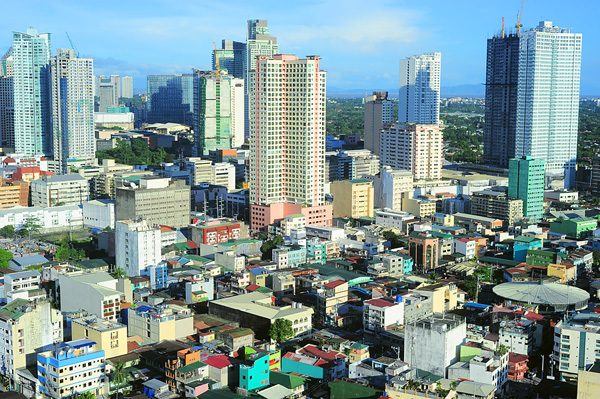Public Transportation in Makati City
Summary: Learning how to get around using public transportation in Makati City is an important step in adjusting to life in Makati City. In this article, we cover the local public transportation options.

Makati City is a bustling metropolis known for its skyscrapers, shopping malls, and vibrant nightlife. It's also a city that's well-served by a variety of public transportation options. These include the Metro Rail Transit (MRT), city buses, jeepneys, tricycles, and taxis. With such a comprehensive public transportation system, it's entirely possible for an expat living in Makati City to comfortably live without a car, relying instead on these modes of transport and walking.
Metro Rail Transit (MRT)
The MRT is a rapid transit system that serves the Metro Manila area, including Makati City. It's a convenient and efficient way to get around, especially during rush hour when the roads are congested. The MRT is generally safe to use at any time of the day, with security personnel present at all stations. However, it can get quite crowded during peak hours, so it's advisable to be mindful of your belongings. A single journey ticket costs between 15 to 30 Philippine Pesos, depending on the distance traveled. The MRT operates from 5:30 AM to 10:30 PM on weekdays, and from 5:30 AM to 9:30 PM on weekends and public holidays.
City Buses
City buses are another common mode of transportation in Makati City. They operate on various routes throughout the city and are a cost-effective way to travel. The fare depends on the distance traveled, but it typically ranges from 12 to 50 Philippine Pesos. Buses run 24 hours a day, making them a reliable option for late-night travel. However, they can get quite crowded during peak hours, and traffic congestion can sometimes lead to delays. As with the MRT, it's advisable to be mindful of your belongings when using city buses.
Jeepneys
Jeepneys are a unique form of public transportation in the Philippines. These brightly colored vehicles, originally made from U.S. military jeeps left over from World War II, are a common sight on the streets of Makati City. Jeepneys follow fixed routes and are a cheap way to get around, with fares starting at just 9 Philippine Pesos. However, they can be a bit confusing for newcomers, as there are no official maps or timetables. It's also worth noting that jeepneys can get quite crowded, and they're not the most comfortable mode of transport, especially for longer journeys.
Tricycles
Tricycles, which are motorbikes with sidecars, are another common form of transportation in Makati City. They're particularly useful for short trips within residential areas, where larger vehicles like buses and jeepneys can't go. Tricycle fares start at around 20 Philippine Pesos, but they can vary depending on the distance traveled and the number of passengers. While tricycles are generally safe to use, it's advisable to negotiate the fare before starting your journey to avoid any misunderstandings.
Taxis
Taxis are widely available in Makati City, and they're a convenient option for those who prefer a more comfortable and private mode of transport. Taxis in Makati City are metered, and the fare starts at 40 Philippine Pesos, with an additional 13.50 Pesos for every kilometer traveled. There are also numerous ride-hailing apps available, such as Grab, which offer a similar service. Taxis and ride-hailing services are generally safe to use, but it's always a good idea to share your trip details with someone you trust, especially if you're traveling alone at night.
In conclusion, Makati City's public transportation system is comprehensive and diverse, making it entirely possible for an expat to live comfortably without a car. However, as with any city, it's important to be aware of your surroundings and take necessary precautions when using public transport.
About the Author
 Joshua Wood, LPC joined Expat Exchange in 2000 and serves as one of its Co-Presidents. He is also one of the Founders of Digital Nomad Exchange. Prior to Expat Exchange, Joshua worked for NBC Cable (MSNBC and CNBC
Primetime). Joshua has a BA from Syracuse and a Master's in Clinical and Counseling Psychology from Fairleigh Dickinson University. Mr. Wood is also a licensed counselor and psychotherapist.
Joshua Wood, LPC joined Expat Exchange in 2000 and serves as one of its Co-Presidents. He is also one of the Founders of Digital Nomad Exchange. Prior to Expat Exchange, Joshua worked for NBC Cable (MSNBC and CNBC
Primetime). Joshua has a BA from Syracuse and a Master's in Clinical and Counseling Psychology from Fairleigh Dickinson University. Mr. Wood is also a licensed counselor and psychotherapist.
Some of Joshua's articles include Pros and Cons of Living in Portugal, 10 Best Places to Live in Ireland and Pros and Cons of Living in Uruguay. Connect with Joshua on LinkedIn.



